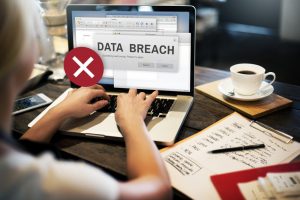
More than ever, educational institutions face the looming threat of data breaches in schools. As technology becomes increasingly integrated into daily school operations, the vulnerability of sensitive student and staff information to cyberattacks has grown significantly. This article delves into the escalating danger of data breaches in educational institutions, shedding light on the critical need for robust cybersecurity measures and stringent data protection protocols in K–12 settings.
The Shifting Landscape of Education Technology
Once reliant on traditional methods, schools are now embracing technology for administrative tasks, digital learning platforms, and communication. This shift has undeniably improved efficiency and accessibility but also has a downside. The digitization of student records and personal information has inadvertently turned schools into attractive targets for cybercriminals seeking valuable data.
Institutions that fail to implement adequate cybersecurity measures often expose themselves to a heightened risk of breaches. Storing large amounts of data can be convenient, but it also creates a risk of cybercrime. Hackers can take advantage of weaknesses in security measures to gain unauthorized access to confidential information.
The Gravity of Data Breaches in Schools
The consequences of data breaches in schools can be far-reaching and devastating. Unauthorized access to student records, financial information, and Social Security numbers can lead to identity theft, fraudulent activities, and personal privacy infringements. However, the impact continues beyond that. A data breach can inflict lasting reputational damage on educational institutions, eroding the trust of parents, students, and the wider community.
When news of a breach surfaces, parents may become wary of entrusting their children's information to the school, and students may feel uneasy about the safety of their private data. Rebuilding trust post-breach can be an arduous task, making the prevention of breaches all the more critical.
Data Breaches in Schools
We have recently seen several high-profile data breaches in educational institutions, highlighting the diversity of methods cybercriminals employ to infiltrate school systems. These breaches have exposed student data, staff information, and financial records, underscoring the need for proactive security measures.
Below is a summary of the latest cyberattacks targeting schools that have been made public:
- Prince George's County Public Schools, Maryland
On August 14, the Prince George's County public schools reported that a cyberattack had affected about 4,500 users. As the second-largest school district in Maryland, they are collaborating with cybersecurity experts, government authorities, and law enforcement to determine the full extent of the attack. The district's main business operations and student information systems have not been affected. However, notifications will be sent to those who have been impacted. To take precautionary measures, all users will need to reset their passwords.
- New Haven Public Schools, Connecticut
The New Haven school district in Connecticut suffered a huge loss of over $6 million due to a cyber-attack that targeted the email account of the district's chief operating officer. The hackers were able to gain access to this account and monitor the communication between the COO and vendors. They used this access to impersonate both parties and redirect district payments to fake accounts linked to a school bus contractor and a law firm. According to the New Haven Register, $3.6 million has been recovered so far in efforts to retrieve the misappropriated funds.
- Minneapolis Public Schools
Thousands of files purportedly stolen from Minnesota's school district were publicly released online in a concerning turn of events. This incident occurred shortly after a cybercriminal group publicized the district's failure to meet a $1 million ransom demand. The aftermath of the ransomware attack, which commenced in February, reverberated across various aspects of the district's systems, impeding internet access from school buildings, badge authentication, and building alarm systems. These incidents underscore the critical importance of fortified cybersecurity measures within educational institutions.
Understanding the Motives: Why Schools Are Targeted
Cyberattacks on schools are not arbitrary; they often serve specific purposes for cybercriminals. Motivations range from financial gain through identity theft and the sale of data on the dark web to leveraging ransomware attacks for financial extortion. Schools, housing valuable personal information of minors, become prime targets due to the potentially higher value of the stolen data.
The Role of Cybersecurity Measures in Schools
Preventing data breaches requires proactive cybersecurity measures. Implementing robust firewalls, encryption, and multi-factor authentication and conducting regular security audits are essential steps in thwarting potential attacks. Investing in cybersecurity shields data and demonstrates an unwavering commitment to the well-being of students and staff.
Data Protection Protocols and Compliance
Adhering to data protection regulations like FERPA and GDPR is not just a legal obligation but a crucial step toward safeguarding student information. Establishing comprehensive data protection protocols ensures compliance and minimizes the risk of breaches, fostering a secure environment for everyone involved.
Building a Culture of Cybersecurity Awareness
Education is critical to prevention. Schools should prioritize ongoing cybersecurity education for staff and students alike. Promoting a culture of cybersecurity awareness through workshops, training sessions, and simulated phishing exercises empowers individuals to recognize and respond effectively to potential threats.
Educational institutions must acknowledge the possible consequences of inadequate cybersecurity and data protection measures. By adopting robust cybersecurity practices, strict data protection protocols, and nurturing a culture of awareness, schools can shield students' sensitive information, uphold their reputation, and contribute to a safer digital learning environment.
The time has come for schools to elevate cybersecurity as an integral part of their operations, ensuring a future where education and safety coexist seamlessly in the digital realm.
Are you concerned about whether your school's information may be on the dark web? You can request a free Dark Web Vulnerability Scan for your institution by clicking here. Provide us with your domain name, and we will search for you. We will then contact you to discuss the results in a confidential meeting (not via email). Questions? Contact us at 305-403-7582.






